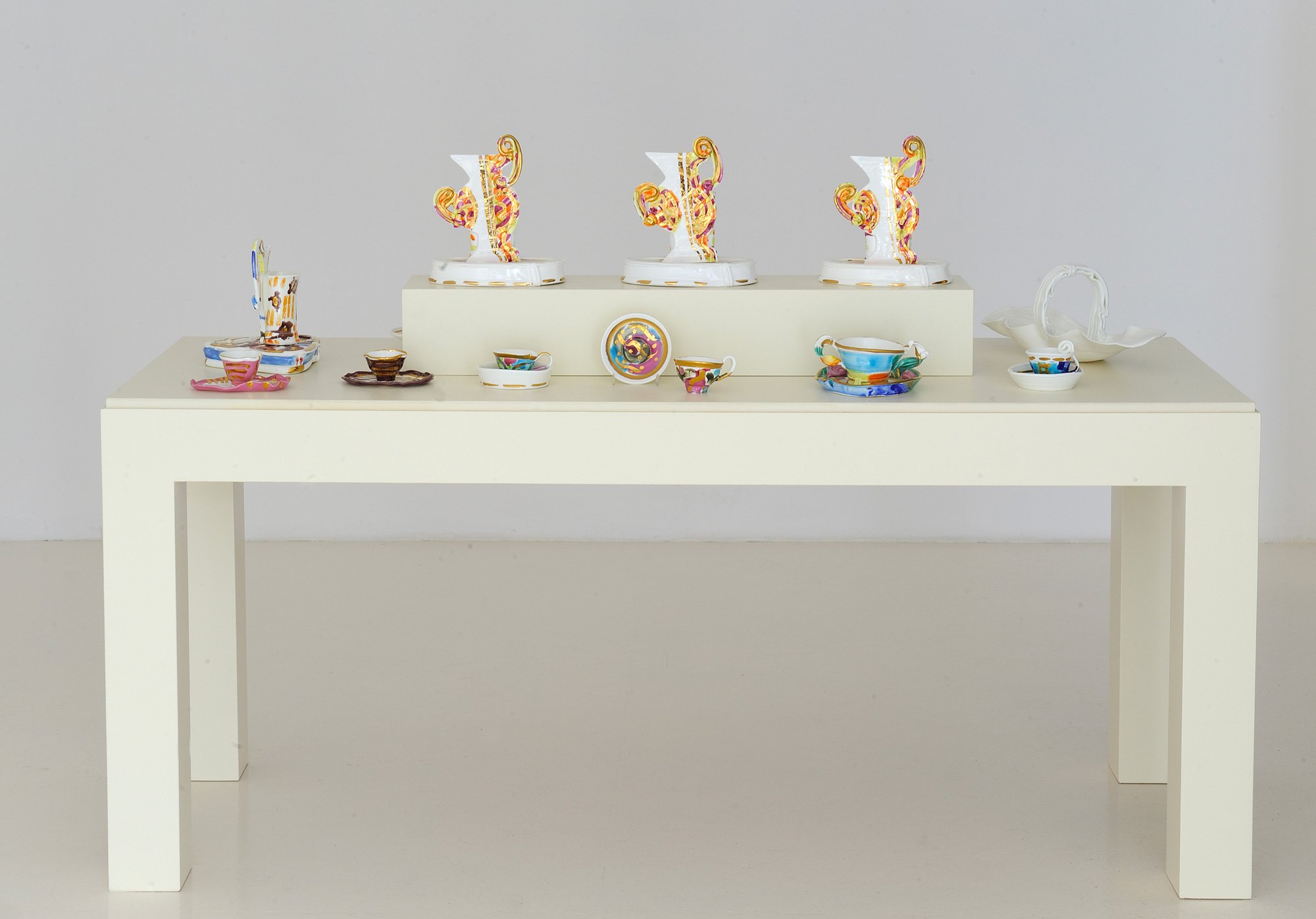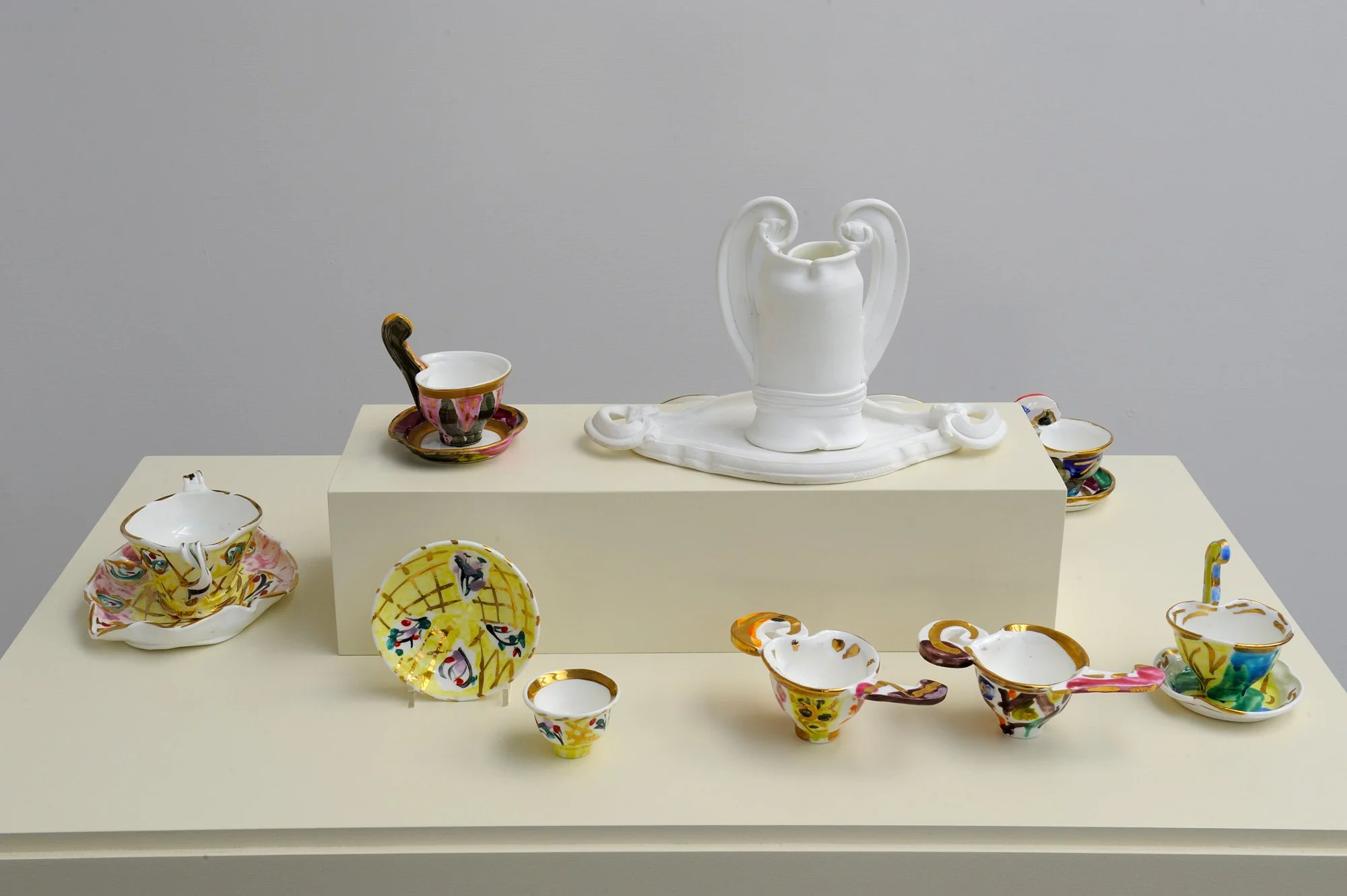Artists
Betty Woodman
Betty Woodman, L’allegra vitalità delle porcellane
Solo exhibition /2.10–15.2 2009/2010
Museo delle Porcellane, Palazzo Pitti, Florence
The beautiful rooms of the Porcelain Museum in Palazzo Pitti are hosting Betty Woodman's exhibition “The Joyful Vitality of Porcelain”, which presents for the first time in Italy a series of porcelain pieces by the American artist, created during her more than twenty-year collaboration with the National Manufactory of Sèvres. The exhibition is curated by Ornella Casazza, director of the Silver Museum and the Porcelain Museum at Palazzo Pitti.
It was 1986 when Woodman received an invitation from sculptor Georges Jeanclos to participate in a project at the Manufacture de Sèvres, one of the most famous in Europe, founded in 1740 in Vincennes by Louis XV and Madame Pompadour and then moved to Sèvres in 1756, shortly thereafter becoming part of the Crown's assets. The project, commissioned by the French Ministry of Culture, immediately turned into a collaboration. Since then, Betty Woodman has been experimenting with the various porcelain clays used in manufacturing, drawing inspiration from the splendid creations made during the 18th century, reproducing their patterns and colours and giving life to her own works of art, linked to the past but totally new, similar to their historical ancestors but absolutely modern.
Betty Woodman jokes: ‘By creating these objects, I wanted to make it possible for those who looked at or used them to dream of being invited for coffee at the court of Marie Antoinette.’ From the outset, the artist's dream was to one day see her creations exhibited alongside the original 18th-century pieces, and now she is finally realising this dream in Florence, where her works are displayed alongside the splendid porcelain pieces purchased by Pietro Leopoldo and Ferdinando III, preserved in the Cavaliere building in the Boboli Gardens.
Betty Woodman's encounter with clay dates back to the 1950s: the mixture of earth and water has always represented the closest relationship between the artist and her work, without all the technical and instrumental mediations required by painting or sculpture. When, in 1951, at just over twenty years of age, she discovered Florence, she also discovered the countless uses of kneaded and fired clay: from Etruscan and Roman production, which she found in museums, to the robbia ceramics she encountered in the city's many tabernacles, to the various objects of Tuscan tradition, from roof tiles to the large vases she saw in the gardens of villas. The city entered his work and also his heart, so much so that after staying there for long periods in the 1960s, he finally decided to buy a house in Antella, where he spends every spring and summer.
She spends the other six months of the year in New York, where she held a major exhibition at the Metropolitan Museum in 2006.
An internationally renowned sculptor, Woodman faced her greatest challenge in Sèvres: working in small dimensions, attempting to create something that contained all the memory of antique porcelain but was, at the same time, thoroughly a work by Betty Woodman.
The works on display are made of soft clay, mostly on the potter's wheel and then assembled. Each piece is hand-painted and has undergone a complicated process of working and firing. Accompanying the porcelain is a selection of embossed monoprints, printed on Arches paper with gold leaf, which feature the porcelain itself as their subject, printed in collaboration with Solo Press, New York.




